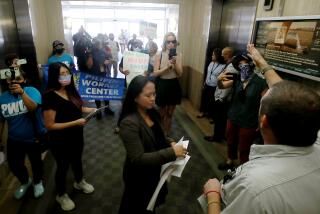Opinion: Workers’ comp is a frayed safety net, two reports say

If you’re going to lose a limb at work, try to avoid doing it in Alabama.
That’s the gist of a new investigative report by ProPublica, partnered with National Public Radio, which explores the inequities and blatant unfairness within the workers’ compensation system (Alabama has the nation’s lowest benefits).
The business world likes to complain that workers’ comp insurance rates are too high, and the system too prone to abuse. But as the ProPublica/NPR report found, “over the past decade ... state after state has slashed workers’ comp benefits, driven by calls from employers and insurers to lower costs. In fact, employers are now paying the lowest rates for workers’ comp than at any time since the 1970s. Nonetheless, dozens of legislatures have changed their workers’ comp laws, often citing the need to compete with neighboring states and be more attractive to business.”
The result, according to the report, is a grim “geographic lottery” in which compensation, including for lost limbs, varies depending on the state in which you were hurt. There are no federal benchmarks, and plenty of state-level political resistance to fix the problems.
As for fraud, that’s an enforcement issue. The solution isn’t to undercut a system that can be a lifeline for a working-class family. If there needs to be better enforcement, then step up the enforcement.
More broadly, erosion of protections across the states has had a devastating effect on families in which one of the wage-earners can no longer work, or work at full capacity, because of a serious injury on the job.
A new report by the federal Department of Labor’s Occupational Safety and Health Administration argues that changes in state workers’ comp programs mean the costs of life-altering workplace injuries are borne primarily by the injured workers, their families, and taxpayers as disabled workers turn to government support programs. It found that only 40% of injured workers even file claims, dissuaded by “job insecurity, lack of knowledge about their rights, or a limited command of English.”
And the casualization of labor -- fewer of us are employees, more of us are independent contractors -- has also had an effect, the report says.
“By misclassifying wage employees as independent contractors, employers do not have to worry about the OSHA requirement to provide a safe workplace, since the OSHA law does not cover the self-employed. Second, these employers avoid paying workers’ compensation insurance premiums (as well as unemployment insurance and other benefits and taxes).
“The pervasive misclassification of wage employees as independent contractors and the widespread use of temporary workers have increased the risk of injury and the number of workers facing financial hardships imposed by workplace injuries. The change in employment relationships also reduces the incentives for companies to assume responsibility for providing safe working conditions, which may result in increased overall risk of workplace injury.”
These are fixable problems. Better attention paid to workplace safety is a start (with unions offering a backstop for inspections). Extending OSHA protections to reflect this new outsourced economy is another, along with tighter restrictions on who can be classified as a private contractor. It would also help to reform workers’ comp with a federal threshold for coverage, and refocus the system on helping injured workers rather than minimizing insurance costs for the employers.
But in this anti-worker political environment, don’t expect much to change.
Follow Scott Martelle on Twitter @smartelle.
More to Read
A cure for the common opinion
Get thought-provoking perspectives with our weekly newsletter.
You may occasionally receive promotional content from the Los Angeles Times.







